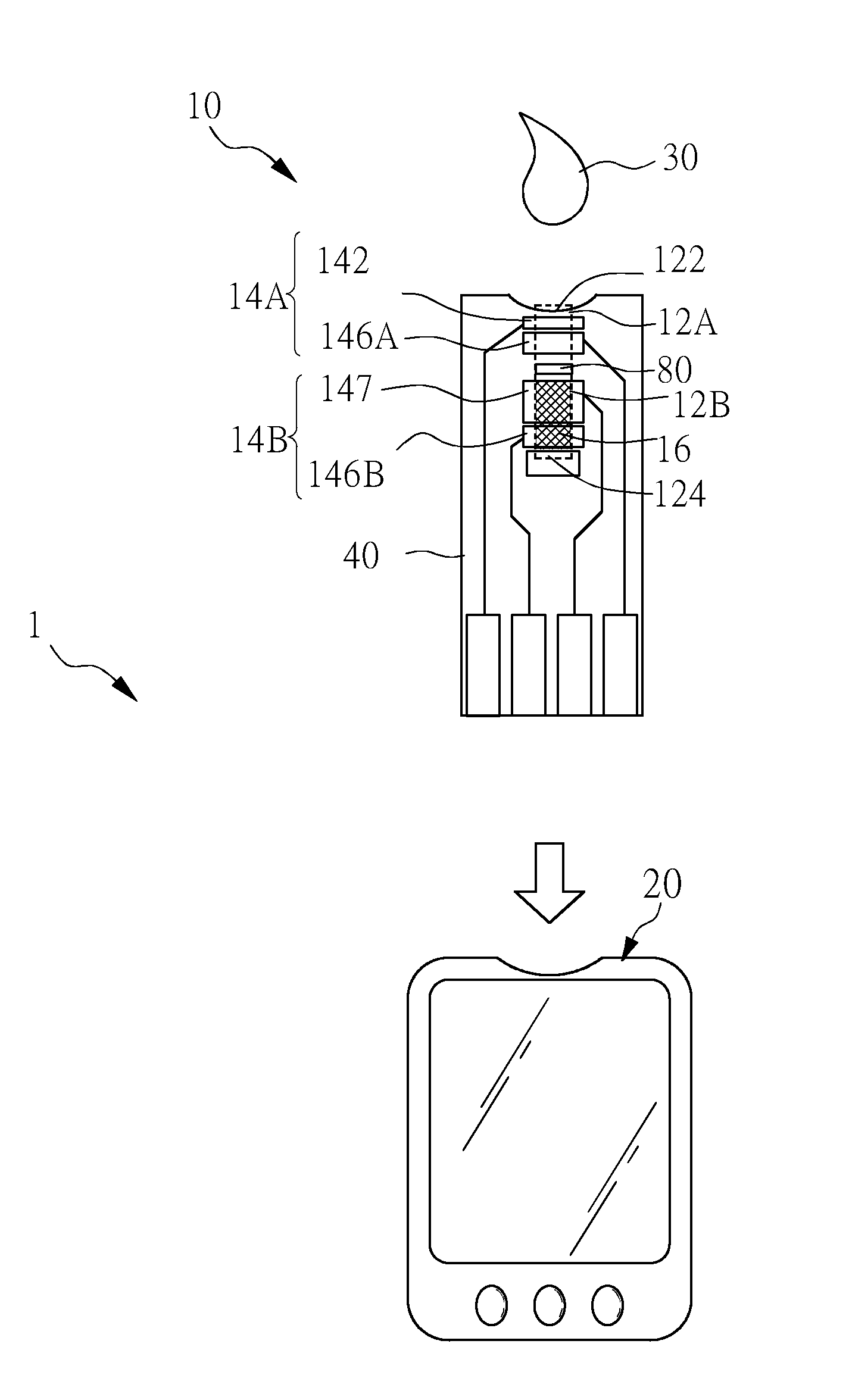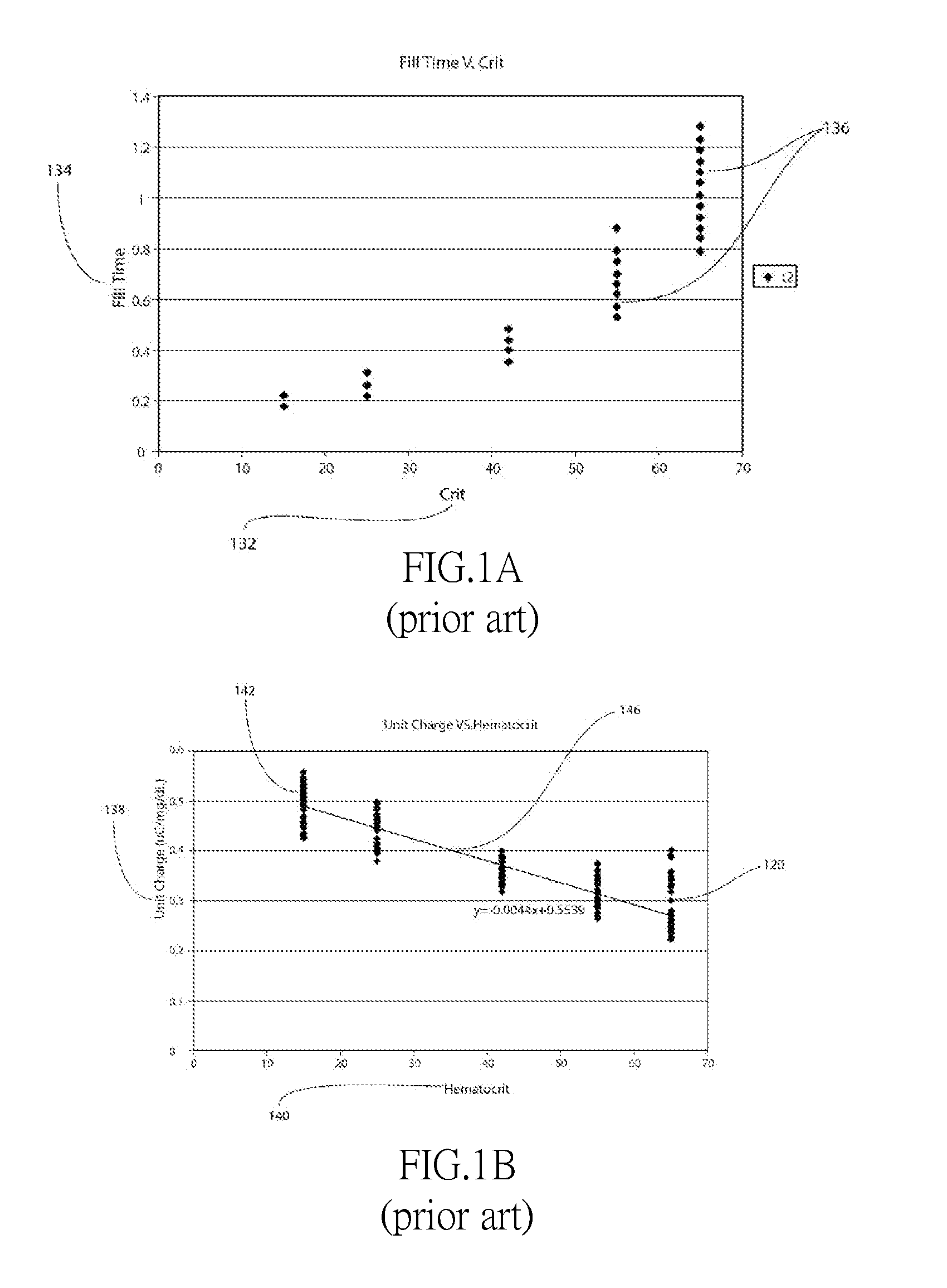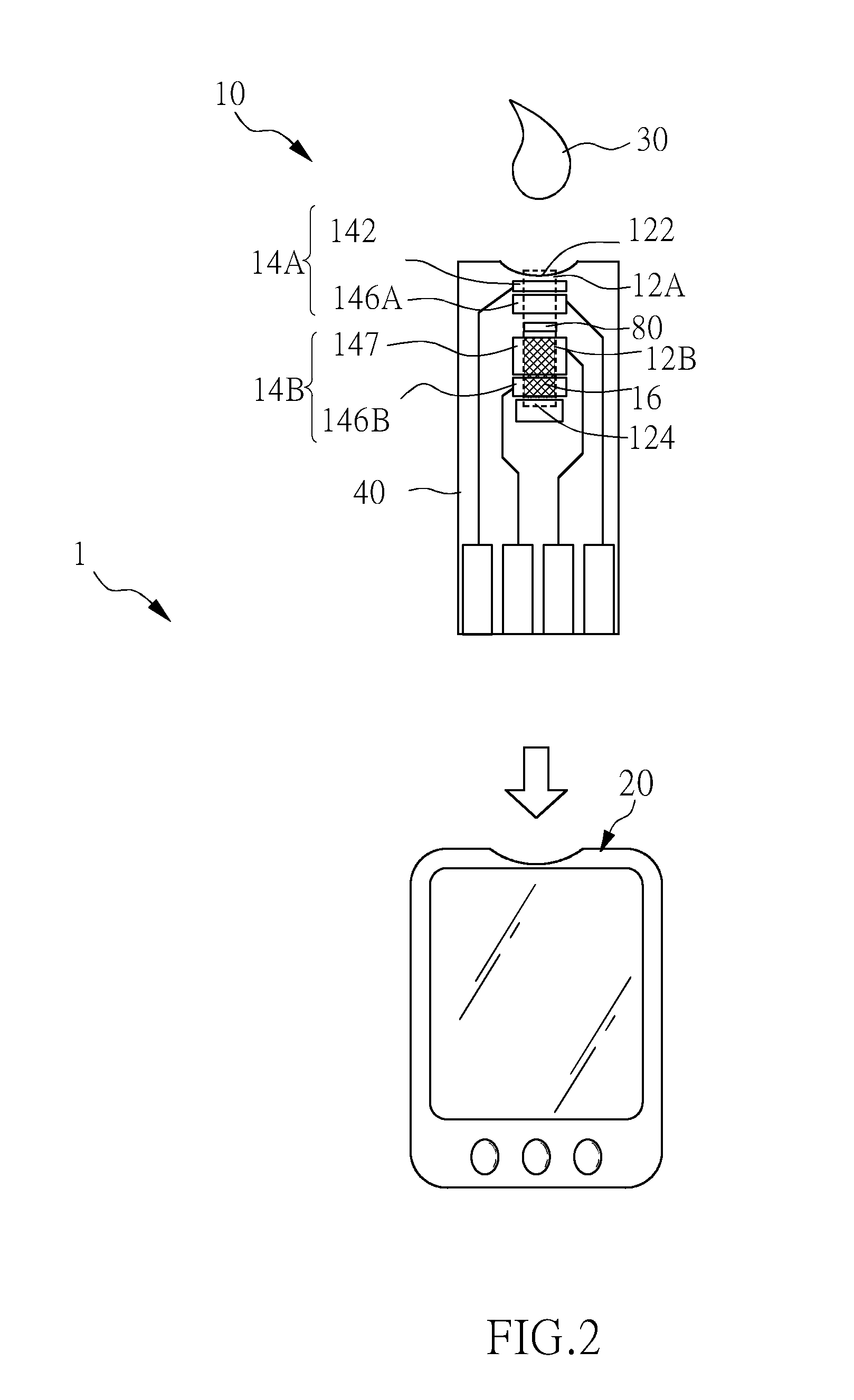Test strip, detecting device and detecting method
a test strip and detecting device technology, applied in the field of test strips, can solve the problems of difficult to supply blood to the heart, brain, liver and kidney, difficult to clean the capillary viscometer, and not convenient to carry the capillary viscometer with the patient, so as to reduce the exposure to reaction reagents, increase the capture of signals, and accurate detect the concentration of analyte
- Summary
- Abstract
- Description
- Claims
- Application Information
AI Technical Summary
Benefits of technology
Problems solved by technology
Method used
Image
Examples
Embodiment Construction
[0018]The advantages and innovative features of the invention will become more apparent from the following detailed description when taken in conjunction with the accompanying drawings.
[0019]The present invention provides a detecting device for detecting a specimen, wherein the detecting device detects the flow time of the specimen and the concentration of the analyte for using the flow time to correct the concentration of the analyte. In an embodiment of the present invention, the detecting device can be used as a blood glucose detecting device.
[0020]Please refer to FIG. 2 to FIG. 2B for the detecting device of the present invention.FIG. 2 illustrates a view of using the detecting device to detect according to an embodiment of the present invention; FIG. 3A to FIG. 12B illustrate various structures of the test strip of the detecting device according to an embodiment of the present invention.
[0021]First, please refer to FIG. 2, according to an embodiment of the present invention, th...
PUM
| Property | Measurement | Unit |
|---|---|---|
| voltage | aaaaa | aaaaa |
| diameter | aaaaa | aaaaa |
| voltage | aaaaa | aaaaa |
Abstract
Description
Claims
Application Information
 Login to View More
Login to View More - R&D
- Intellectual Property
- Life Sciences
- Materials
- Tech Scout
- Unparalleled Data Quality
- Higher Quality Content
- 60% Fewer Hallucinations
Browse by: Latest US Patents, China's latest patents, Technical Efficacy Thesaurus, Application Domain, Technology Topic, Popular Technical Reports.
© 2025 PatSnap. All rights reserved.Legal|Privacy policy|Modern Slavery Act Transparency Statement|Sitemap|About US| Contact US: help@patsnap.com



